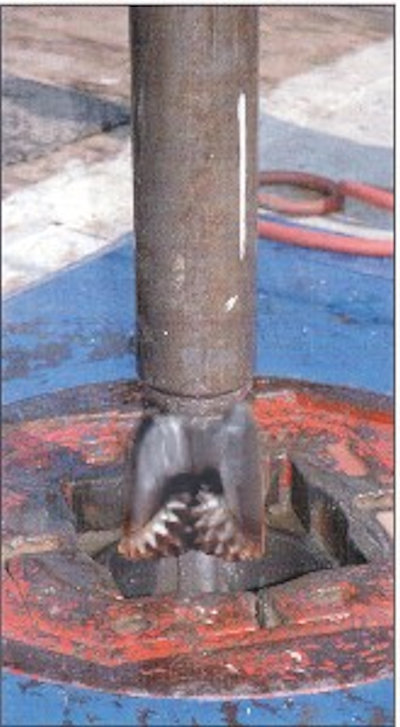Starting the Drilling Process
To start drilling, a surface drill bit is attached to a bottomhole drill collar, which is in turn attached to the kelly.
Once made up, the driller lowers the bit through the rotary table and engages the mud pump(s) and checks for leaks and other abnormalities.
The driller lowers the drill string and the kelly bushing is set in the rotary drive bushing and the rotary is engaged.
The driller then slowly lowers the bit to bottom and begins the drilling operation.
Potential Hazards
- being struck by the tongs, the make-up chain, or pipe
- being caught between collars and tongs, spinning chain, and pipe
- receiving strains and sprains during lifting or controlling movement of drill collars, bit breakers, pipes, and tongs
- slips, trips, and falls
- encountering shallow gas
Possible Solutions
- Implement an effective pipe handling, make-up, break-out procedure:
- Stand outside the tong swing radius when breaking pipe.
- Use proper tong latching techniques and use proper hand and finger placement on tong handles.
- Stand clear of the rotary table when it is rotating.
- Use a tail rope on the spinning chain to keep hands away.
- Use proper lifting technique.
- Hoist slowly to limit pipe momentum.
- Use mechanical lifting aids such as a rig floor winch.
- Use tail rope to guide as necessary.
- Comply with the Blowout Prevention Program
Knowledge Check Choose the best answer for the question.
4-6. What type of injury may occur due to lifting or trying to control the movement of drilling equipment?
You forgot to answer the question!

